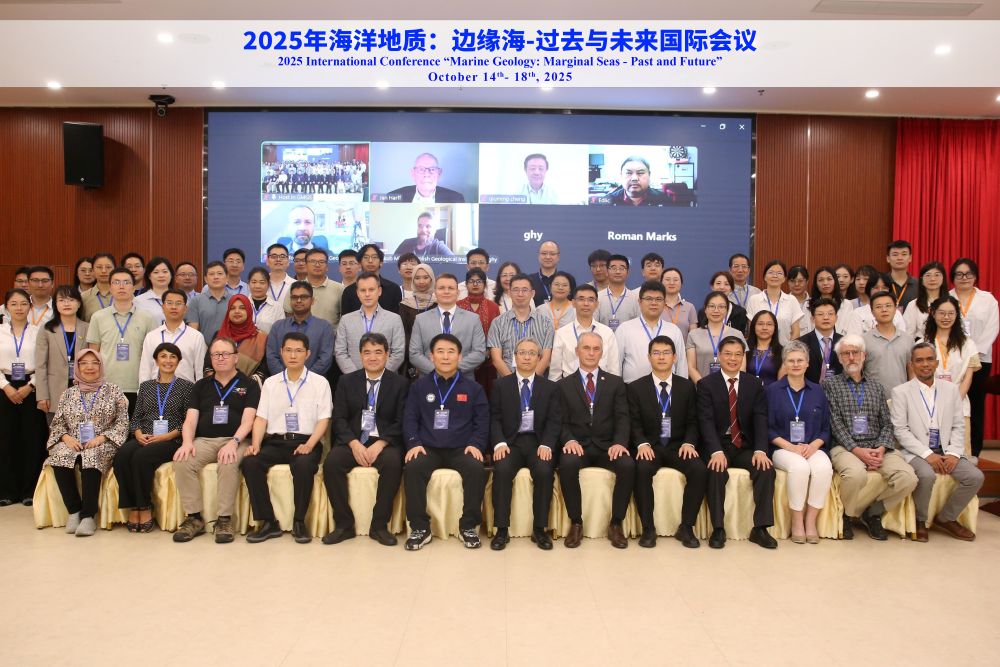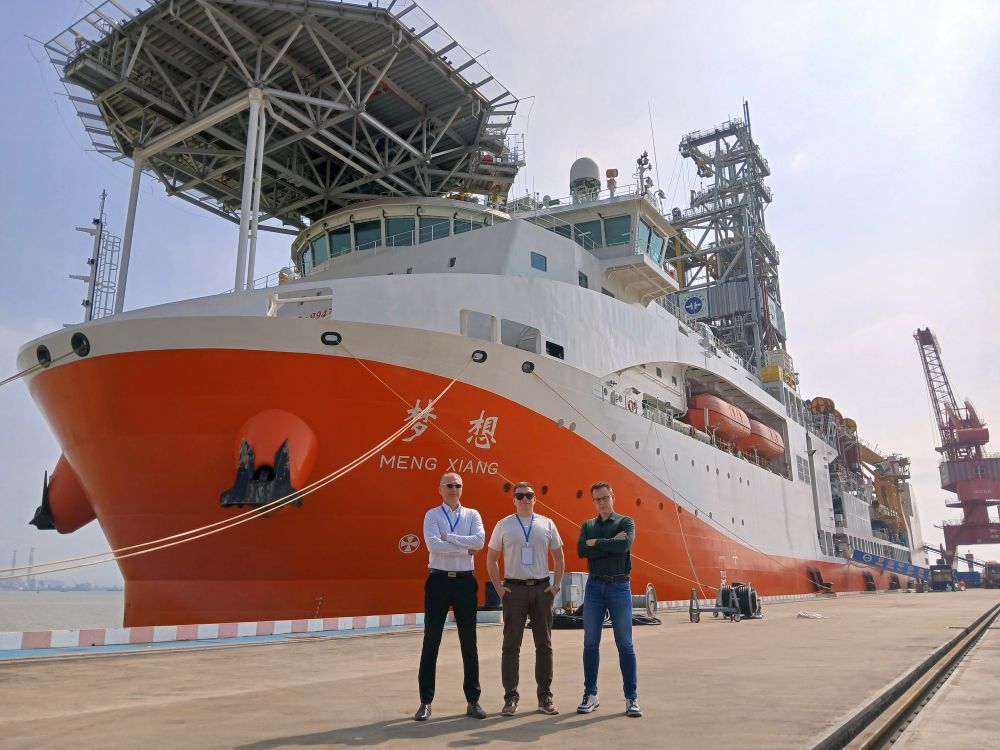 On 14–18 October 2025, an international scientific conference entitled ‘Marine Geology: Marginal Seas – Past and Future’ was held in Guangzhou, China, attended by a delegation from the Polish Geological Institute – National Research Institute, consisting of dr Wojciech Jegliński, dr hab. Grzegorz Uścinowicz and dr hab. Karol Zglinicki.
On 14–18 October 2025, an international scientific conference entitled ‘Marine Geology: Marginal Seas – Past and Future’ was held in Guangzhou, China, attended by a delegation from the Polish Geological Institute – National Research Institute, consisting of dr Wojciech Jegliński, dr hab. Grzegorz Uścinowicz and dr hab. Karol Zglinicki.
The main organiser of the conference was the Guangzhou Marine Geological Survey, a department-level institution directly under the China Geological Survey of the Ministry of Natural Resources, in cooperation with numerous universities, organisations and scientific and research institutes involved in marine geological research, including PGI-NRI.

Conference participants at the opening ceremony
During the conference, issues related to the geology of marginal seas and their palaeogeographic development were discussed. The main topics included sedimentation processes, tectonics, and environmental changes in shelf and coastal areas.
The conference consisted of a plenary and three thematic sessions:
- Sources-to-Sink models and links to climate development (session chaired by dr hab. Grzegorz Uścinowicz);
- River Mouth Systems and Urban Seas (during this session, dr Wojciech Jegliński gave a presentation entitled The Vistula River Mouth Area: Holocene Development of the Sea Coast);
- Biogeography – biostratigraphy from Deep-time among marginal seas.
The conference also discussed the current status and plans for the Marginal Seas Initiative, which involves joint scientific and research activities by experts involved in shelf sea research in various parts of the world. The discussion also dealt with the functioning of the Marginal Seas Task Group, an international, interdisciplinary group established under the IUGS Deep-Time Digital Earth (DDE) Big Science Programme.
Participation in the conference provided an opportunity to gain experience about the latest trends and research results in the field of marine geology of marginal seas – both in terms of substantive knowledge and methodological practice. In addition, the event created a platform for exchanging experiences and establishing contacts with experts and institutions from around the world, which may result in future scientific cooperation.

PGI-NRI delegation in front of the Meng Xiang exploration vessel
During its stay in Guangzhou, the Polish delegation also had a unique opportunity to visit the largest and most advanced exploration vessel used by the Chinese geological service. Meng Xiang (‘Dream’) is a specialised ocean vessel with a length of 180 metres and a displacement of 42,600 tonnes, capable of drilling to a depth of 11 kilometres. Advanced research laboratories, including geological, geochemical and microbiological laboratories, can be found on board.
The visit of the PGI-NRI delegation at the Maritime Branch of the China Geological Survey in Guangzhou was an opportunity to discuss and take steps towards further strengthening cooperation between the Polish and Chinese geological services, giving this cooperation an even more practical dimension.
Representatives of both services emphasised the importance of developing partnerships, exchanging experiences and implementing joint scientific and research projects. This formed the basis for the development and ceremonial signing of the Annex to the Cooperation Agreement, concluded in May 2024 in Warsaw. The Annex concerns joint scientific research on the environmental record of the Holocene and Late Pleistocene in marginal seas located at high and low latitudes, in the estuarine systems of the southern Baltic Sea (Vistula) and the South China Sea (Pearl River).
Text: Wojciech Jegliński, Grzegorz Uścinowicz, Karol Zglinicki
Photos: materiały GMGS, Yufeng Wang














 PGI-NRI offer
PGI-NRI offer Mineral resources of Poland
Mineral resources of Poland  Oil and Gas in Poland
Oil and Gas in Poland 




 Subscribe to RSS Feed
Subscribe to RSS Feed